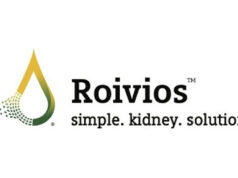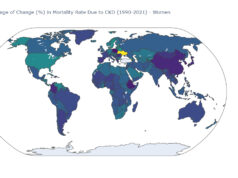 Increased levels of omega 3 polyunsaturated fatty acids (n-3 PUFAs) can cut the risk of incident chronic kidney disease (CKD) and lead to a “slower decline in renal function” according to new research published in The BMJ.
Increased levels of omega 3 polyunsaturated fatty acids (n-3 PUFAs) can cut the risk of incident chronic kidney disease (CKD) and lead to a “slower decline in renal function” according to new research published in The BMJ.
Previous studies such as the one by Jason H Y Wu (The George Institute for Global Health, Sydney, Australia) et al in 2019 have pointed to n-3 PUFAs as offering cardiometabolic benefits, while there is a growing body of evidence that “endothelial dysfunction, hypertension, and dyslipidaemia” are also mitigated by the acids. Given these are CKD risk factors, the authors of this study argue, it is possible that n-3 PUFAs could stymie the development of kidney disease.
Those authors, led by Kwok Leung Ong (University of New South Wales, Sydney, Australia), assess the existing evidence on n-3 PUFA intake and CKD as limited, not least by the frequent use of dietary intake questionnaires as a primary method of inquiry. This, they say, render it “subject to errors related to misreporting”. They point to biomarkers as a superior avenue for the measurement of n-3 PUFA intake. It is these that they chose as the centre of their study, bringing together cohort studies to compare n-3 PUFA biomarkers with incident CKD. This, they say, “allowed us to more precisely quantify the association with a larger sample size, distinguish between individual n-3 PUFAs, and avoid measurement errors related to self-reported dietary intake”.
Using data from the Fatty Acids and Outcomes Research Consortium (FORCE), the authors looked at the results from 19 study cohorts, including 25,570 patients in 12 countries. This included the biomarker levels for n-3 PUFAs. The primary outcome was incident CKD, “defined as an eGFR that decreased to <60mL/min/1.73m2”. Secondary outcomes included >40% decrease in eGFR and annual changes in eGFR.
Increased levels of total seafood-derived n-3 PUFAs were associated in the results with “8% lower risk of incident CKD per interquintile range with low heterogeneity in the observed associations between cohorts (relative risk 0.92, 95% confidence interval 0.86 to 0.98; p=0.009, I2=9.9%”. This was also assessed categorically, with those in the highest fifth of n-3 PUFA intake levels experiencing a 13% lower risk of CKD. The secondary outcomes displayed similar trends.
These results are described by Ong et al as reflecting a “modestly lower risk of incident CKD”. This, they note, only applied to n-3 PUFAs derived from seafood and not those derived from plants—a subtlety that was differentiable through the biomarkers under consideration. They state that these results withstood a number of sensitivity analyses, “highlighting the robustness of the findings”.
The authors’ discussion stipulates that their findings “do not prove a causal relationship between seafood n-3 PUFAs” and CKD, though they state that they support the consumption of seafood for omega 3 acids as part of a healthy diet, particularly for those at risk of kidney disease. They are confident on the advantages of their study, particularly its wide focus “across cohorts from diverse demographic, dietary, and medical backgrounds with different incident CKD rates” as well as its “inclusion of most of the cohorts with available exposure and outcome data, which reduced the likelihood of publication bias”. Nevertheless, they note it has a number of limitations including that n-3 PUFA biomarkers were only measured once, at baseline, which they said could “bias the associations towards the null”. Future studies should build on their findings, they say, and “randomised controlled trials are warranted” to further investigate n-3 PUFAs’ association with incident CKD.












